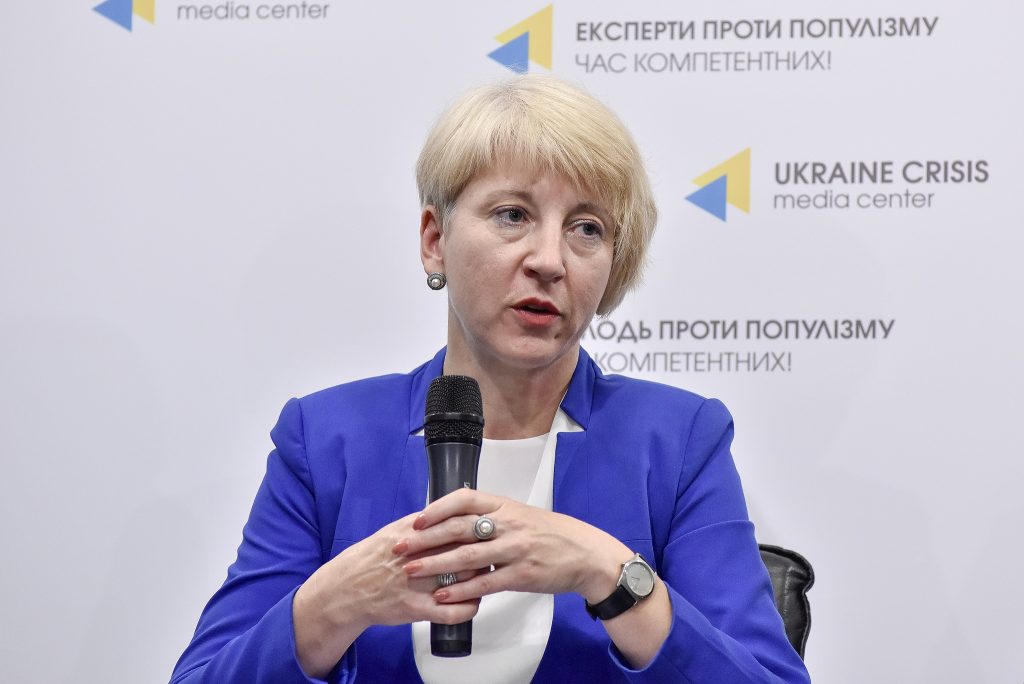Can the materials covered by the media become the basis for criminal proceedings and judicial decisions? Why despite frequent corruption scandals none of the top corrupt officials has been yet behind the bars in Ukraine? Journalists, experts and representatives of anti-corruption bodies tried to answer these questions during the discussion held at Ukraine Crisis Media Center.
The top 5 journalistic investigations of important issues that have not been taken into account by the relevant authorities include materials on the export of coal from the temporarily occupied territories to Russia in 2015 and coal imports from Russia under the guise of coal from South Africa (Yevhen Holovatiuk, journalist at Liga.net), the activities of the State agency for investment and national projects as well as its head Kaskiv (Anna Beminets, Slidstvo Info), the investigation of the Boyko’s towers case by the General Prosecutor’s Office (“Realist.Onlayn”) and the NKREKP decision to increase the grid connection payment (Serhii Holovniov “Cenzor.Net”), informed Roman Nitsovych, head of projects and programs at the analytical center DiXi Group.
Yevhen Holovatiuk, journalist at Liga.net claims that he is not surprised by law enforcement bodies neglecting the investigation, because they are not enjoying people’s confidence. Besides, he suspects they are involved in “schemes”. “The Security Service is one of the main channels that accumulate the money earned from the coal imports and exports. I have no direct evidence, but I can list ten companies that export thousands of tons of coal every month, but are not entered for the Ukrainian sanctions. If we analyze these companies, we will reveal such names as, for example, Melnychuk brothers: one of them lives in Kyiv, the other is the deputy minister in the ‘LPR’. How is this possible? Any normal country would close this subject in a month,” he noted.
“I have learned at first hand that a real result can be achieved only if there is a chain ‘honest investigator – honest prosecutor – honest judge’ with the active role of the lawyer who also should provide legal protection of the rights of their clients,” noted Larysa Holnyk, judge at the Oktyabrskiy district court in Poltava. Even if the judge, the final member of the “chain,” is trying to be objective, the “white spots” intentionally committed in the evidence base will play into the hands of the defendant. The newly established NABU and Special Anti-Corruption Prosecutor’s Office are working well, whereas the courts, SBU and Prosecutor General’s Office continue to work as before. “Now the political will is aimed at sabotaging some journalist investigations. Besides, some political forces are used to dismiss indictments and convictions. For something to be changed in the Prosecutor General’s Office system, persons who are ruining such cases should be punished; otherwise they will do whatever they like with perfect impunity,” emphasized Larysa Holnyk.
Livia Saplacan, Head of Public Relations at the National Anticorruption Directorate of Romania, shared the experience of her country. The Romanian anticorruption agencies were established 15 years ago. They have been working effectively. In 2016, 1,271 cases were submitted to the court. Among the defendants were three ministers, six senators, eleven deputies and 47 mayors. All in all, 870 officials were declared guilty. Among them were one minister, two senators, and eight deputies (including the former prime minister). Thus, the court passed a verdict of guilt in 90% of cases. The corrupt assets of EUR 667 million were confiscated.
Livia Saplacan noted that the National Anticorruption Directorate of Romania (analog to NABU) is actively cooperating with journalists. A special methodological booklet has been developed for this purpose. It has been just investigative journalism which has led to several criminal cases. For example, the illegal transfer of football players that inflicted damages of $1.5 million to the state. The perpetrators were sentenced to 3-6 years imprisonment. Another criminal case resulted from the journalist investigation on bribery and theft (over $2 million) committed by the hospital director in Bucharest. In the latter case, the article was published in the late November 2016; on December 9, the suspect was arrested; on May 15, the case was submitted to the court. Almost in all these cases the officials were charged with suspicion 1-3 weeks after publication of the article, and after 5-6 months they appeared to be on the wrong side of the bar.
The successful cooperation between the relevant authorities and journalists requires mutual trust and understanding. “The first lesson I learned is that the various bodies involved work with different speeds. Journalists want the investigation and conviction to be conducted with lightning speed. When I was a journalist, I also shared this thought. But the prosecutor’s work involves gathering very serious, conclusive evidence. That is why they should be careful and attentive. Secondly, the cat with a bell will not catch a mouse. We must maintain the confidentiality of the investigation materials until a certain stage of the investigation. These lessons formed the basis of the code of rules according to which we communicate with journalists,” noted Livia Saplacan.
Oleksandr Skomarov, director of NABU investigators also noted that investigative journalism as a source of information and ground to open criminal proceedings is very useful for them. That is why investigations should be based on the evidence. “Although, unlike NABU detectives, journalists have access not to all databases, their conclusions about certain circumstances should be based on documents and reliable information. If the criminal proceeding is registered, we will perform almost the same work as journalists did, but using the Criminal Procedure Code provisions as to legal evidence and the legality of ways of their receipt,” he stressed.




